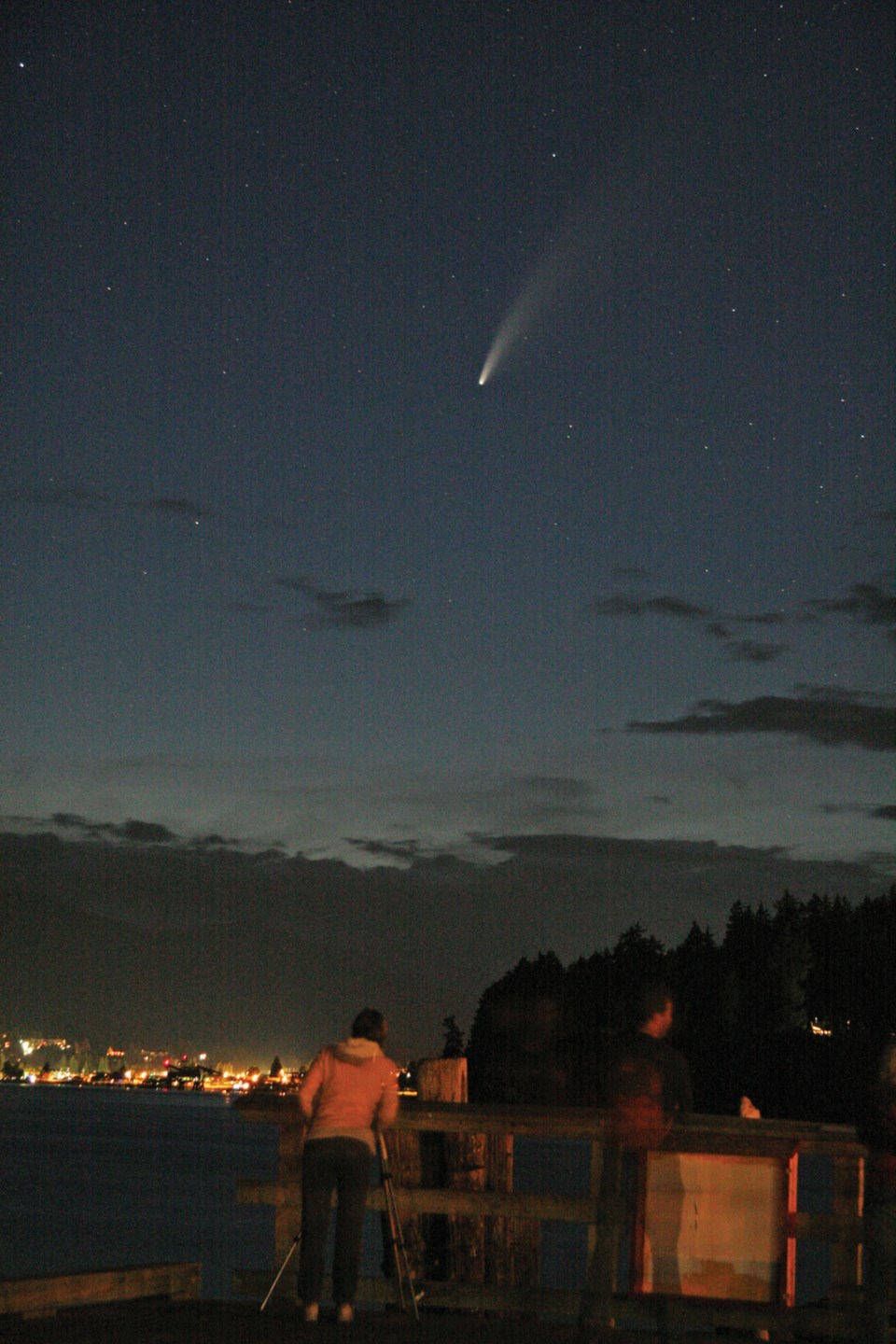July will be a tough act to follow!
The Astronomy Picture of the Day site (APOD) at apod.nasa.gov/apod/ has many spectacular photos featuring the NEOWISE Comet, including July 9, which shows the comet against a foreground of last month’s topic: noctilucent clouds. On July 23, another shot of the comet also shows Castle Neuschwanstein – the inspiration for Walt Disney’s castle – as well as an example of this month’s topic: the Perseid meteors. I love it when a great segue just drops right in your lap!
The source of the orbiting dust and debris that causes the Perseid meteor shower is Comet Swift-Tuttle, formally called 109P/Swift-Tuttle and discovered in 1862 independently by Lewis Swift and Horace Tuttle, hence the name. It took a few years to figure out its likely orbit as a periodic comet and predict (correctly) its return in 1992. Interestingly, it was Giovanni Schiaparelli in 1866 who figured out that this comet was the source of the Perseid meteor showers every August. His eventual reward for this was to get a crater on Mars named after him, familiar to many of us science-fiction nerds who loved The Martian; the crater on Mars that Matt Damon had to drive to just to catch a lift home is actually named after the guy.
Here are three interesting facts about Swift-Tuttle:
1. It has a highly elliptical orbit that every 133 years takes it out well past Pluto at aphelion and its perihelion – closest approach to the Sun – is just a little bit inside Earth’s orbit.
2. It’s really moving as it zooms around the Sun and swings back out into the far outer solar system. Think 42 kilometres per second or about 94,000 miles per hour. Combine that with Earth’s average orbital speed of about 67,000 miles per hour and the relative velocity between it and us is about 60 kilometres per second or 134,000 miles per hour!
3. The size of the comet’s nucleus is 25 kilometres, plus or minus a few per cent, 10 times the diameter of Comet NEOWISE – one of the biggest solar system bits that moves around in our orbital lane.
I have seen estimates that if we ever lose a little cosmic dodgeball game with this thing, the impact would be 25 to 30 times as energetic as the one that did the dinosaurs. The good news is that the best calculations show we’re not going to get smacked for at least 2,000 years. There is an interesting article about the comet at www.space.com/33677-comet-swift-tuttle-perseid-meteor-shower-source.html
So, the little bits of dust and debris that have been shed by the comet continue to orbit the sun in roughly the same orbit, and every year in early August we go through that general volume of space and suck up all the bits in our way. You may see some after sunset but the best place to be to see all the meteors as they disintegrate in our atmosphere will be on the hemisphere of Earth facing the same way we travel around the sun and before sunrise. Result: for us in Sechelt, stay up past 1:30 a.m., find a place where you have a good view of the sky and something comfy to lie on, and just look up. At its peak around Aug. 12 you can expect to see anywhere from 60 to 150 meteors per hour. No equipment required except maybe a thermos of your favourite hot beverage.
Otherwise, Jupiter and Saturn are low in the southeast after sunset; they were at opposition in late July and are still big and bright. A pair of 10 power binoculars will show Jupiter’s four big moons if you can steady the binoculars well enough. Mars rises around midnight, getting steadily closer and brighter before its October close opposition with Earth. Venus rises about 3 a.m. and is unmistakably bright. Mercury is visible with difficulty very low in the southeast just before sunrise for the first few days of the month.
All of the movements of moon and planets described can be checked out at www.heavens-above.com. The next regular meeting of the Astronomy Club should be on Aug. 14 at 7 p.m. using Zoom. Information on the speaker and topic and how to register for the meeting will be on the club website at sunshinecoastastronomy.wordpress.com/ the week of the meeting.



